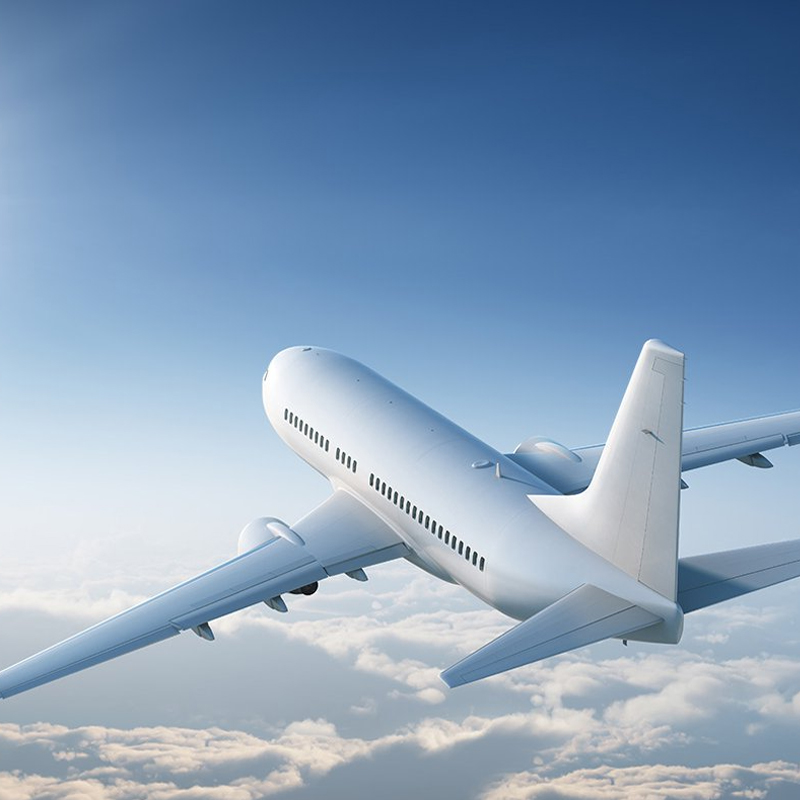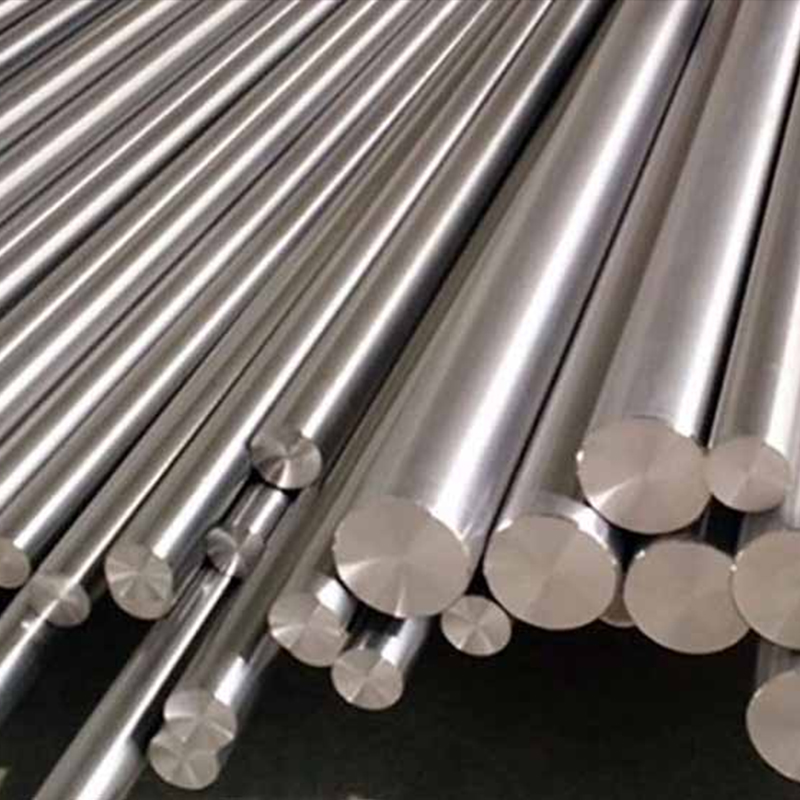Understanding 2000 Series Aluminium Alloys in Aerospace
 Jul 26,2024
Jul 26,2024

The 2000 series aluminium alloys are primarily alloyed with copper. They are fundamental to aerospace engineering. They offer high strength, excellent machinability, and superior fatigue resistance. These properties make aluminium parts indispensable in the construction of aircraft structures and components. They ensure performance and durability in demanding environments.
What is 2000 Series Aluminium?
2000 series aluminium alloys are copper-alloyed materials. They are known for high strength, excellent machinability, and good fatigue resistance. These properties make them ideal for aerospace use. https://www.tuofa-cncmachining.com/

2000 Series Aluminium Composition
Comprised primarily of aluminium.They have significant copper content. They also contain magnesium, manganese, silicon, and trace elements for enhanced properties.
|
Alloy |
Aluminium (Al) |
Copper (Cu) |
Magnesium (Mg) |
Manganese (Mn) |
Silicon (Si) |
Iron (Fe) |
Zinc (Zn) |
Other Elements |
|
2024 |
90.7-94.7% |
3.8-4.9% |
1.2-1.8% |
0.3-0.9% |
0.5% max |
0.5% max |
0.25% max |
0.15% max |
|
2014 |
90.6-92.5% |
3.9-5.0% |
0.2-0.8% |
0.4-1.2% |
0.5-1.2% |
0.7% max |
0.25% max |
0.15% max |
|
2219 |
91.5-93.8% |
5.8-6.8% |
0.02% max |
0.2-0.4% |
0.2% max |
0.3% max |
0.1% max |
0.15% max |
Historical Development and Usage in Aerospace
The advent of 2000 series aluminum alloys in the early 20th century revolutionized aerospace engineering. Renowned for their exceptional strength, fatigue resistance, and ability to withstand high temperatures, these alloys have become indispensable in the design and manufacture of aerospace vehicles.
Early Development and Applications
- Early 20th Century: The 2000 series, primarily alloyed with copper, emerged and quickly gained traction in the aviation industry due to its high strength.
- World War I: These alloys found their way into military aircraft construction, significantly enhancing structural integrity and reliability.
- World War II: 2024 aluminum alloy, also known as duralumin, became a mainstay in aviation manufacturing, extensively used in fuselages, wings, and landing gear of fighter planes.
Post-War Expansion and Widespread Use
- Jet Age: The advent of jet aircraft further propelled the use of 2000 series alloys. Their high-temperature resistance made them ideal for engine components and structures exposed to extreme heat.
- Commercial Aviation: The alloys gradually permeated commercial aviation, finding applications in fuselages, wings, and internal structures of passenger planes, bolstering safety and fuel efficiency.
- Space Exploration: 2000 series alloys played a pivotal role in spacecraft manufacturing, used in satellites, rockets, and space shuttles, contributing to humanity's remarkable achievements in space exploration.
Technological Advancements and Future Outlook
- New Alloy Development: Ongoing advancements in materials science have led to the creation of novel 2000 series alloys with enhanced strength, corrosion resistance, and machinability.
- Advanced Manufacturing Techniques: The emergence of technologies like 3D printing has opened up new avenues for the utilization of 2000 series alloys in aerospace applications.
- Sustainability: Future iterations of these alloys will prioritize sustainability, minimizing environmental impact through optimized composition and manufacturing processes.
The evolution of 2000 series aluminum alloys mirrors the continuous progress in aerospace engineering. As technology continues to evolve, these alloys are poised to remain at the forefront of aerospace innovation, propelling humanity towards even greater heights in the exploration of the skies and the cosmos.

Why 2000 Series Aluminium is Important in Aerospace
Offers exceptional strength, fatigue resistance, and an excellent weight-to-strength ratio. Enhances aircraft performance and durability.
Strength and Durability
These alloys provide exceptional strength and durability. They are essential for aerospace components subjected to high stresses. They are also crucial for demanding operational conditions.
Weight-to-Strength Ratio
2000 series aluminium alloys offer an excellent weight-to-strength ratio. This is crucial for enhancing aircraft performance and fuel efficiency. It also helps maintain structural integrity.
Key Properties of 2000 Series Aluminium
High tensile strength, excellent fatigue resistance, moderate thermal conductivity, and improved machinability. Ideal for aerospace applications.
Mechanical Properties
2000 series aluminium alloys are renowned for their impressive mechanical properties. These include high tensile strength and excellent fatigue resistance.
Tensile Strength
With tensile strengths ranging from 172 to 670 MPa. These alloys are ideal for high-stress aerospace applications. They ensure robust structural components.
Fatigue Resistance
The superior fatigue resistance of 2000 series aluminium alloys ensures longevity. It also ensures the reliability of aerospace components. They perform well under cyclic loading conditions.
Thermal Properties
These alloys exhibit moderate thermal conductivity and predictable expansion rates. This makes them suitable for temperature-sensitive aerospace applications.
Conductivity
2000 series aluminium alloys possess sufficient thermal conductivity. This allows for effective heat dissipation in various aerospace components and applications.
Expansion Rates
Their moderate thermal expansion rates allow for precise design considerations. This is crucial in aerospace applications where temperature variations are significant.
Corrosion Resistance
Though 2000 series alloys have lower corrosion resistance. Surface treatments can enhance their durability. This makes them suitable for harsh aerospace environments.
Protection Against Oxidation
Protective treatments and coatings significantly improve the oxidation resistance of 2000 series aluminium alloys. They enhance the durability of these alloys.These enhancements extend their lifespan. This extends their lifespan in aerospace applications.
Longevity in Harsh Environments
When adequately protected, these alloys demonstrate exceptional durability and longevity. This is true even in the harshest aerospace environments.
Common 2000 Series Aluminium Alloys in Aerospace
2024, 2014, and 2219 aluminium alloys offer high strength. They have excellent machinability and fatigue resistance. They are crucial for aerospace.
2024 Aluminium Alloy
2024 aluminium alloy is widely used in aircraft structures. It has high strength, good fatigue resistance, and excellent machinability.
Uses in Aircraft Structures
This alloy is essential for constructing aircraft wings and fuselage components. It provides the necessary strength and fatigue resistance.
Benefits and Drawbacks
2024 offers high strength and fatigue resistance. However, it requires protective coatings. This is due to its lower corrosion resistance in harsh environments.
2014 Aluminium Alloy
2014 aluminium alloy is ideal for heavy-duty structural applications in aerospace. It is known for its high strength and excellent machinability.
Applications in Aerospace Engineering
This alloy is used in heavy-duty components like aircraft frames. It offers exceptional strength and hardness for demanding aerospace applications.
Comparison with Other Alloys
Compared to other 2000 series alloys, 2014 provides superior machinability and higher strength. However, it needs more extensive corrosion protection.
2219 Aluminium Alloy
2219 aluminium alloy is used in high-temperature aerospace applications. It offers excellent performance under extreme conditions, such as in fuel tanks.
High-Temperature Applications
Ideal for high-temperature aerospace applications. 2219 aluminium alloy maintains structural integrity and performance in extreme conditions.

Applications of 2000 Series Aluminium in Aerospace
Used in fuselage, wings, engine components, and spacecraft. These alloys provide high strength, fatigue resistance, and lightweight properties.
Structural Components
2000 series aluminium alloys are essential for various structural components in aerospace. They provide the necessary strength and lightweight properties.
Fuselage and Wings
These alloys are critical for constructing fuselage and wings. They offer the strength and durability required for safe and efficient aircraft performance.
Load-Bearing Structures
Load-bearing structures, such as landing gear and support beams, rely on 2000 series alloys. They handle significant forces during operation.
Engine Component
2000 series aluminium alloys are used in various engine components. They provide high-temperature resistance and durability for optimal performance.
Heat Shields and Panels
Engine heat shields and panels benefit from the high-temperature resistance of 2000 series aluminium alloys. They also benefit from the alloys' machinability.This ensures durability.
Other Engine Applications
Other engine parts, including housings and brackets, leverage the high strength. They also benefit from the excellent machinability of 2000 series aluminium alloys.
Satellite and Spacecraft
2000 series aluminium alloys are crucial for lightweight structures in satellites and spacecraft. They are also essential for durability.They enhance efficiency and performance.
Lightweight Structures
In satellites and spacecraft, the lightweight nature of these alloys is beneficial. It contributes to overall efficiency.This enhances performance and mission success.
Durability in Space Environments
These alloys ensure the structural integrity of components. They also ensure durability in the harsh conditions of space. This is critical for long-term missions.
Advances in 2000 Series Aluminium Technology
Enhanced strength, fatigue, and corrosion resistance are achieved through new alloy formulations. These improvements come from advanced heat treatments and additive manufacturing.
Recent Research and Developments
Ongoing research and development are enhancing 2000 series aluminium alloys. This research focuses on improving strength, fatigue resistance, and corrosion resistance.
New Alloy Formulations
New formulations within the 2000 series are being developed. These formulations enhance properties such as strength, fatigue resistance, and corrosion resistance.
Improved Manufacturing Processes
Innovative manufacturing processes are enhancing the performance of these alloys. These processes include advanced heat treatments and additive manufacturing.
Integration with Composite Materials
Integrating 2000 series aluminium alloys with composite materials leverages the strengths of both. This results in superior aerospace performance.
Sustainability and Recycling
Efforts to improve the recyclability of 2000 series aluminium alloys are advancing. These efforts reduce environmental impact and enhance sustainability in aerospace.
Conclusion
2000 series aluminium alloys are essential in the aerospace industry. They provide high strength, excellent fatigue resistance, and a favorable weight-to-strength ratio. These alloys are crucial for various applications. They ensure the efficiency and safety of aerospace structures. Continuous advancements and innovations in 2000 series aluminium technology by Tuofa company in china, including Aluminum CNC Machining, will further enhance their role in aerospace engineering. These advancements support the industry's evolving demands and sustainability goals. Get A Quote | Custom CNC Parts | Tuofa.
 Tel/WeChat:
Tel/WeChat:  Email:
Email: 
 Home
Home
 What is 8620 Steel? Complete Guide 2025
What is 8620 Steel? Complete Guide 2025 







